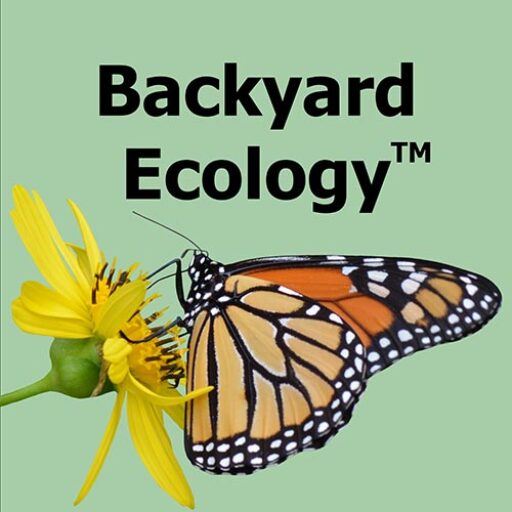Tag: Pollinator
-
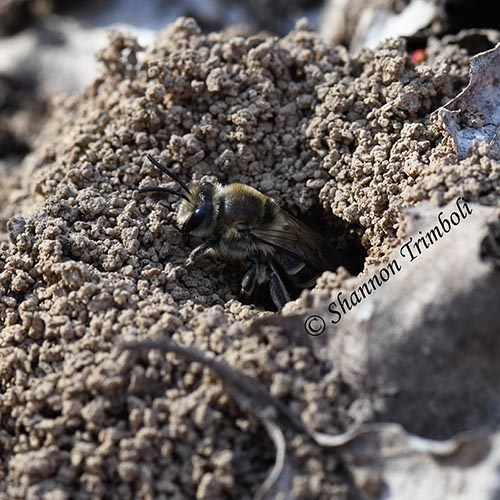
Native Ground Nesting Bees: Important Early Season Pollinators
When most people think of bees, the non-native honeybee and the native bumble bees are what often come to mind because they are big and easily recognized. But there are thousands of other, lesser known species of native bees. Some of the most interesting are the many species of ground nesting bees that, as their…
-
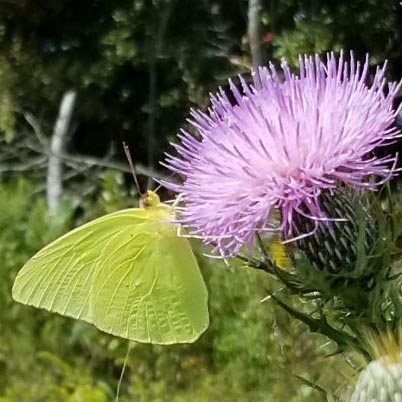
Cloudless Sulphur Butterfly: A Common Fall Migrant
One of the many things I love about the fall is watching all the cloudless sulphur butterflies (Phoebis sennae) flying across our yard and fields. They always remind me of little drops of sunshine fluttering through the air. Cloudless sulphurs can be found in most of the eastern U.S. They are more common from approximately…
-
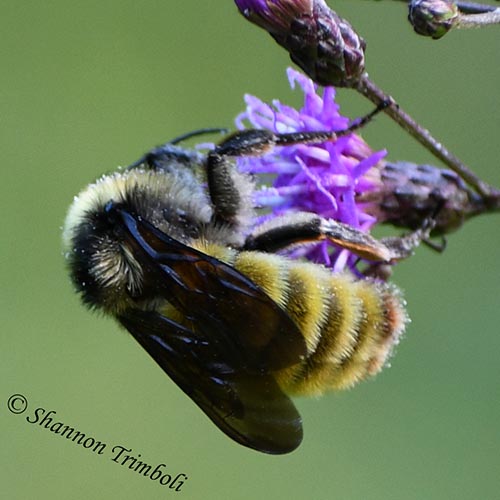
Recent Nature-related Discoveries in My Yard and Community – August and September 2022
I absolutely love fall! The temperatures are much nicer. The fields are a riot of color – lots of bright yellow, of course, but also purples, whites, pinks, oranges, and scattered other colors. Goldfinches are everywhere. And then there are all the butterflies, bees, wasps, and other “bugs” busily going about their business on the…
-
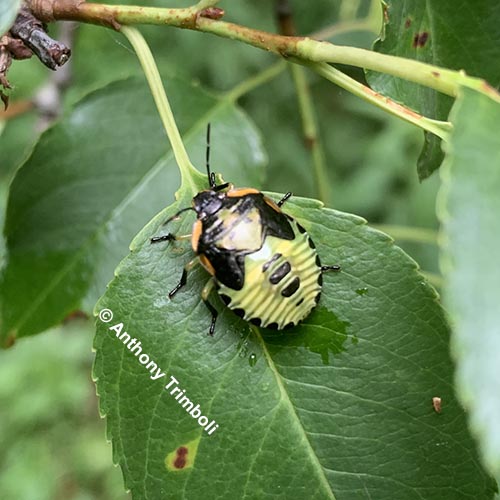
Recent Nature-related Discoveries in My Yard and Community – June and July 2022
The last month or so has been incredibly hot, dry, and humid where I’m at. Heat indexes of over 100 have become normal. I’m very grateful for all the wildlife that I can view from the house while sitting in the air-conditioned comfort on those hotter days. Yet, even with the miserably hot weather, we’ve…
-
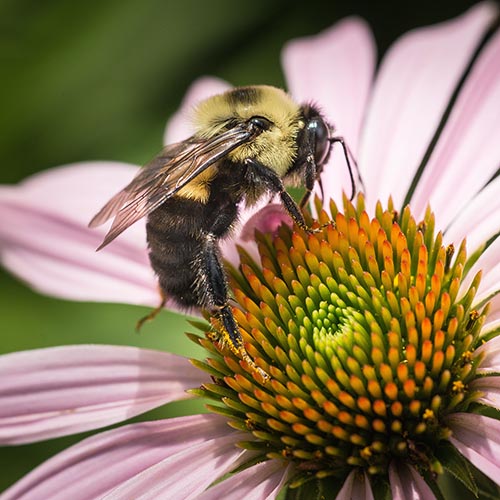
Ask a Bumble Bee: What Flowers Do Bumble Bees Prefer?
in PodcastI often get asked what people can plant for bees. I can give good general answers to those questions, because we have a good idea of what types of flowers tend to be attractive to bees in general. We can then use that information along with personal observations made by ourselves and others to fairly…
-
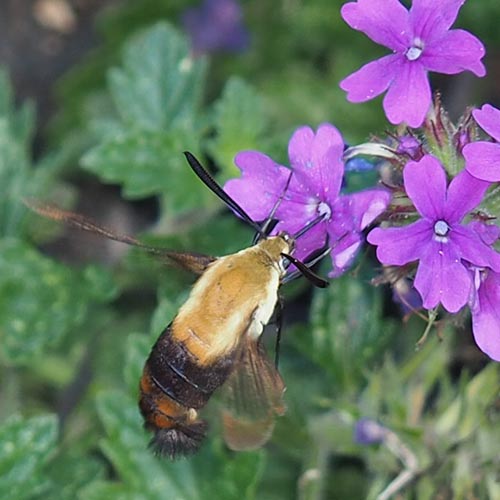
Bumblebee moth: The moth that looks like a hummingbird and a bumble bee had a baby
Have you ever caught a quick glimpse of a tiny “hummingbird” hovering around a flower? Then realized that not only was it too small, but it also wasn’t the right colors and wasn’t producing the characteristic hum. Perhaps it looked like a hummingbird and a bumblebee had a baby. Don’t worry. You aren’t going crazy…
-
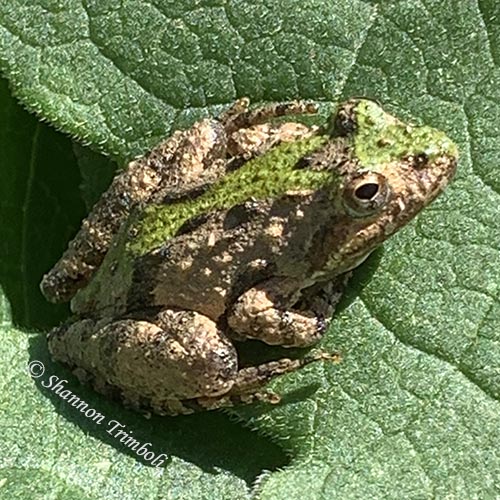
Recent Nature-related Discoveries in My Yard and Community – April and May 2022
Where did this spring go? The last couple of months have been crazy busy, but so much fun too. I have had the opportunity to make some amazing nature-related discoveries both around my own property and while traveling. Below are a few of the nature-related discoveries I’ve made on our property over the last couple…
-

Nature-related Discoveries in My Yard and Community – April 2021
This is always such an exciting time of year. The wildflowers are blooming. The insects are appearing again. The birds are starting to sing their dawn chorus in the mornings again. And the spring warbler migration is in full swing. Things are changing almost daily. There is always some new nature-related discovery to be made.…
-
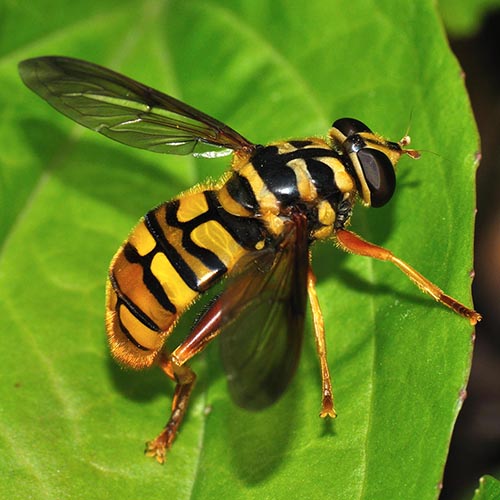
Flower Flies or Hover Flies: Bee Mimic Extraordinaires
in PodcastFlower flies, a.k.a. hover flies, are common garden visitors, but they are often overlooked. The reason they are so often overlooked is because they are extraordinary mimics, usually of bees or wasps. Their mimicry is so good, that flower flies are often mistakenly identified as bees in social media posts, magazine articles, newsletters, and sometimes…
-
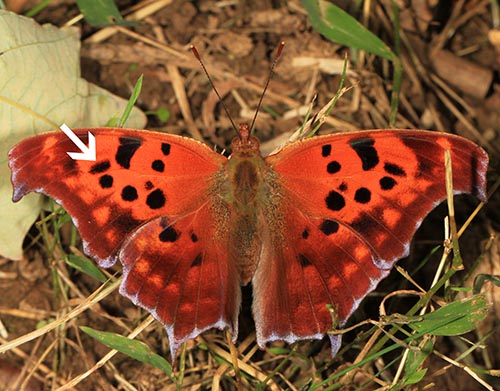
Question Mark Butterfly: One of our earliest flying butterflies
The question mark butterfly (Polygonia interrogationis) breaks many of the stereotypes that we usually place on butterflies. In some places, you can find it flying on warm days in late February or early March. If you do see one fly by, pay close attention to where it lands. They have amazing camouflage that allows them…
-
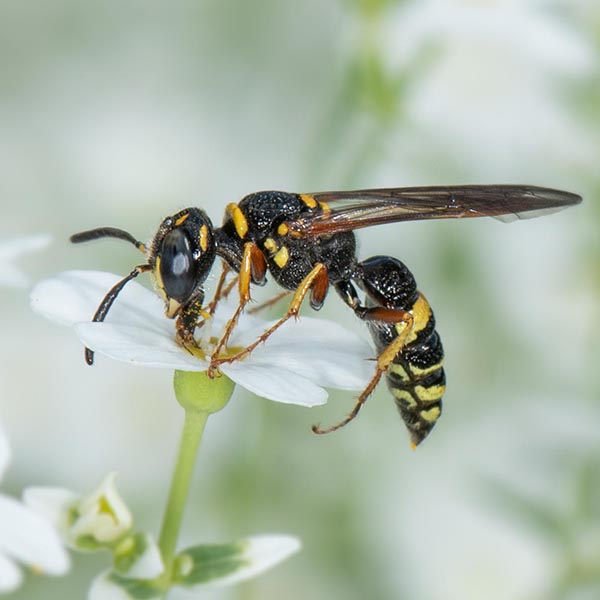
Wasps: Victims of an Often Undeserved Reputation
in PodcastLike many people, I grew up with a healthy…. apprehension (ok, fear) of wasps. And, of course, I’ve seen all the memes on social media vilifying wasps and calling them names that I’m not going to repeat on this podcast. But, those fears and concerns are mostly unfounded and misplaced. Wasps generally aren’t going to…
-
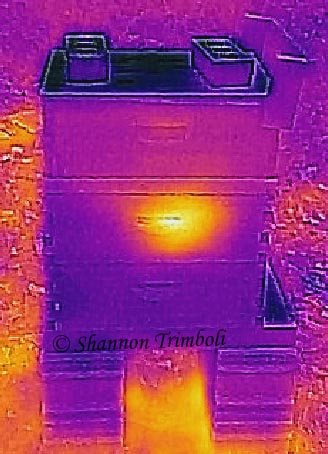
Honey Bees and Native Bees in the Winter
Growing up in Kentucky, I commonly heard the phrase “If you don’t like the weather, wait 5 minutes and it will change.” As an adult, I learned that just about every state surrounding us has the same saying. The same thing is probably true for much of the rest of the eastern U.S. This is…
-
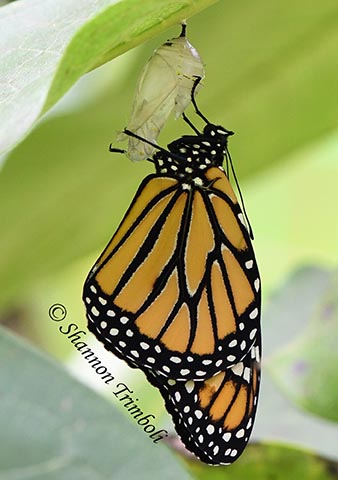
What does the endangered species ruling for the monarch butterfly really mean?
On December 15, 2020, the U.S. Fish and Wildlife Service (USFWS) “found that adding the monarch butterfly to the list of threatened and endangered species is warranted but precluded by work on higher-priority listing actions.” But, what does that really mean? And how does it affect things going forward? What does the ruling mean? To…
-
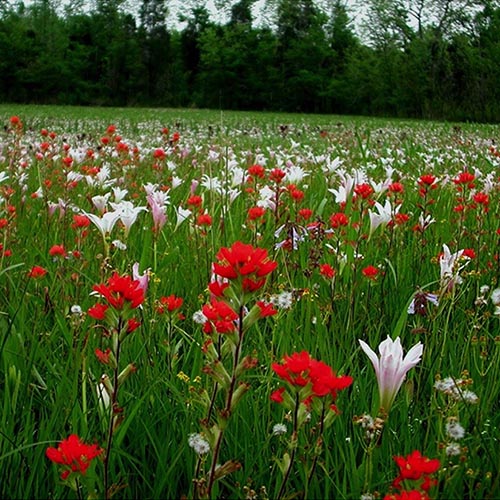
Conserving our Southeastern Grasslands with Dwayne Estes
in PodcastMany of us grew up hearing about the decline of the old growth forests and their impacts on neotropical songbirds and other wildlife. I think this was especially true for those of us who grew up here in the eastern U.S. However, the story that hasn’t been told as well is that of the southeastern…
-
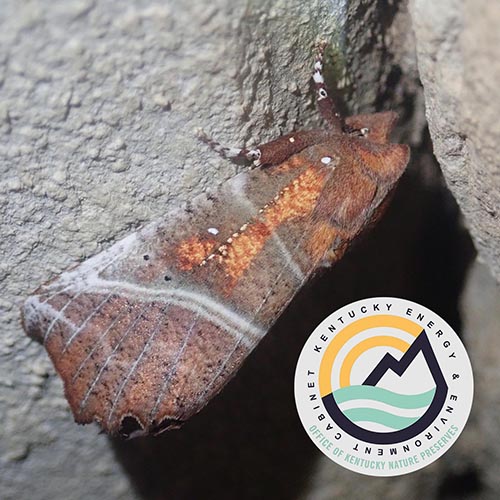
Moths in the Winter with Shelby Fulton
in PodcastHi, Everyone! In today’s episode of the Backyard Ecology podcast we are talking with Shelby Fulton who is a terrestrial biologist with the Kentucky Nature Preserves. Our conversation focuses on moths and how they survive the winter. We also talk about how diverse moths are and ways to observe them during the winter. The number…
-
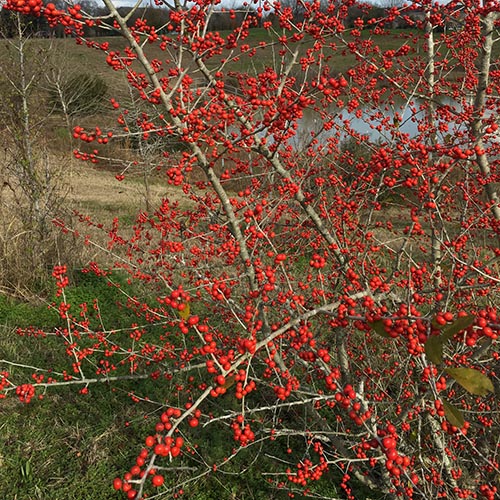
Possumhaw: A deciduous holly
Possumhaw (Ilex decidua) has many common names including deciduous holly, swamp holly, and prairie holly. It is also sometimes called winterberry, but be aware that “winterberry” is more commonly used in reference to Ilex verticillata, which is also a deciduous holly. To make things more complicated, Ilex verticillata is sometimes called “deciduous holly,” even though…
-
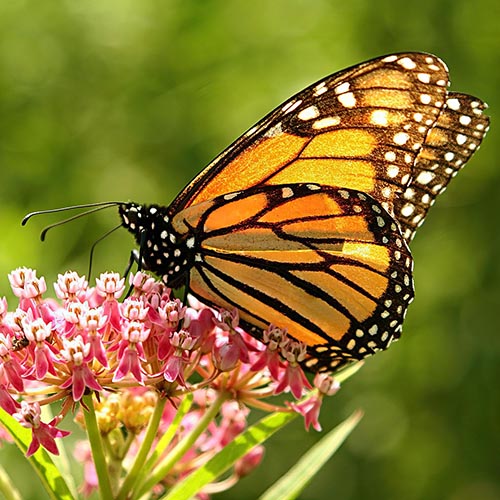
Milkweeds in Urban and Suburban Monarch Waystations with Dr. Adam Baker
in PodcastHi Everyone! Today we are talking with Dr. Adam Baker who recently completed his PhD studying monarch butterflies and their use of monarch waystations in urban and suburban areas. His research has led to some important and easily applied strategies that any of us can use in our gardens. First, Adam looked at existing monarch…
-
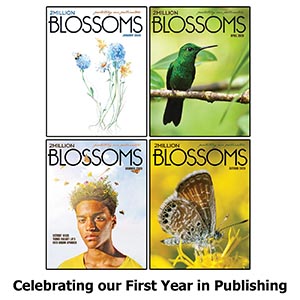
2 Million Blossoms and Dr. Kirsten Traynor
in PodcastHi Everyone! On today’s episode of Backyard Ecology we talk with Dr. Kirsten Traynor, a research associate at Arizona State University and the editor of 2 Million Blossoms, a quarterly magazine dedicated to protecting our pollinators. Our conversation takes a curvy, twisty path that covers multiple different topics including what led her to start the…
-
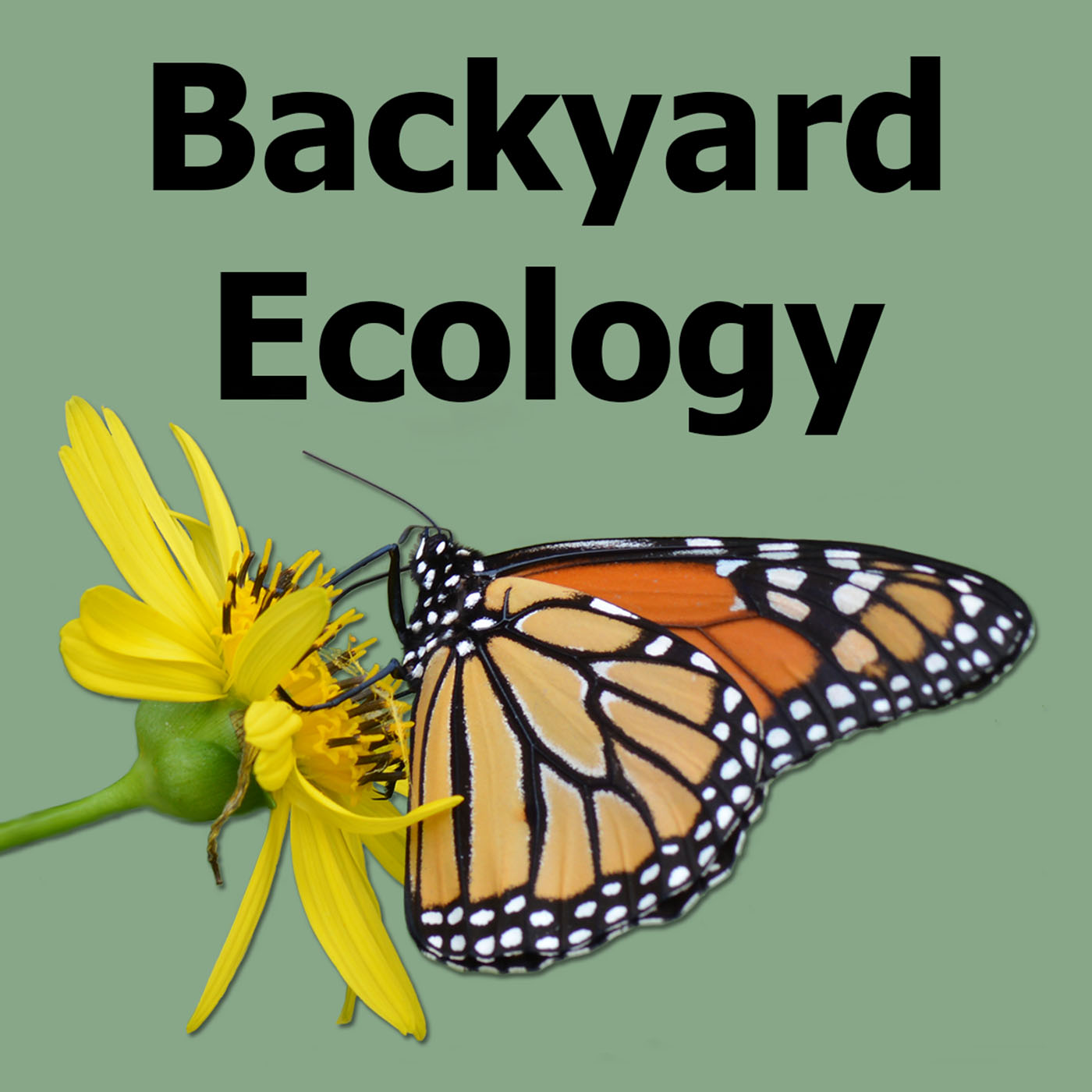
Announcing the Backyard Ecology Podcast
Over the last few months, I’ve been researching and working on a new project. Today I’m super excited to announce that I am launching a Backyard Ecology podcast! For those who might be wondering, a podcast is kind of like an audio version of a blog. I started listening to podcasts about a year and…
-
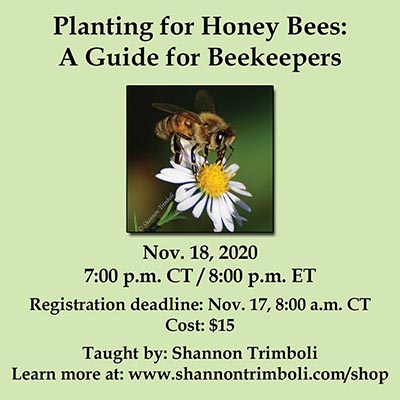
Planting for Honey Bees: A Guide for Beekeepers – Virtual Class
“What can I plant for my honey bees?” is a question that beekeepers often ask me. It’s also the question that I asked when I began my beekeeping journey. However, there isn’t a single one-size-fits-all answer to that question. Or, at least not a GOOD one-size-fits-all solution when it comes to planting for honey bees.…
-
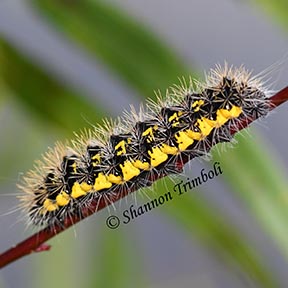
Nature-related Discoveries in My Yard and Community – October 2020
Fall is my favorite time of year. I love the cooler, less humid weather, the distinctive fall smell in the early morning, the beautiful fall flowers, the busy actions of the butterflies and bees as they prepare for whatever winter looks like for them, and the transition from our summer bird species to our winter…
-
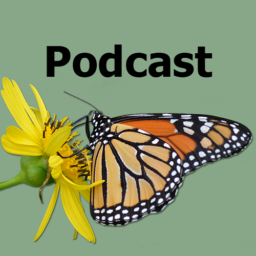
Introducing the Backyard Ecology podcast
in PodcastMany people believe that nature is only “out there” – in national parks, other large chunks of pristine land, or some far-off exotic place. For a long time, I did too. But the truth is that nature is everywhere and there are still plenty of discoveries to be made about the common species inhabiting our…
-
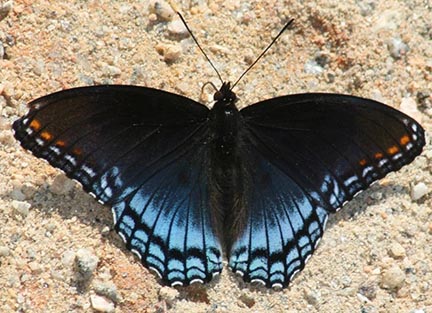
Red-spotted Purple – The dark blue and black butterfly that isn’t a swallowtail
For most of us in the eastern U.S., there are four common species of dark blue and black butterflies. Three of those species are swallowtails, but one of them isn’t. At first glance, the red-spotted purple (Limenitis arthemis astyanax) looks similar to the dark blue and black swallowtails. However, if you give it a second…
-
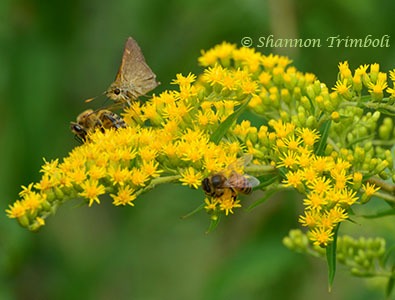
Delay Mowing Fields Until After the First Frost
During the late summer and early fall, wildflowers such as goldenrods, thoroughworts, ironweeds, asters, and many others turn roadsides and fields into a pollinator oasis. Several of our butterfly species in the eastern U.S. migrate for the winter and rely on those flowers to provide them with the energy needed for their migration. Other species…
-
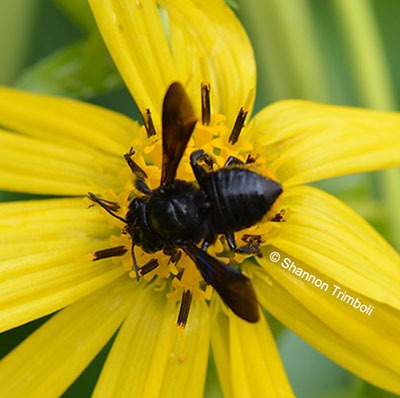
Carpenter Mimic Leafcutter Bee
The carpenter mimic leafcutter bee (Megachile xylocopoides) can be found throughout most of the eastern U.S., although some of the sources I found seem to suggest that it might be more common in the southern portion of its range than the northern portion. NatureServe ranks this species as “apparently secure” to “secure,” meaning that its…
-
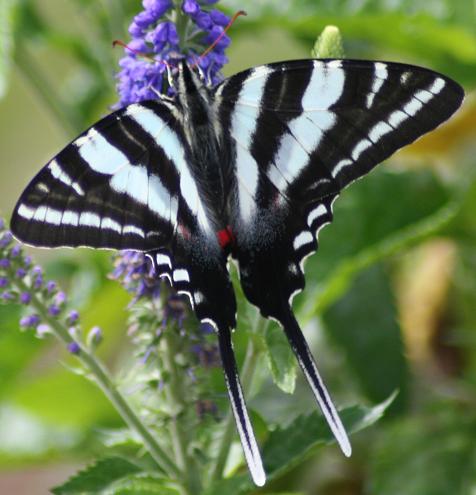
Zebra Swallowtail
The zebra swallowtail (Protographium marcellus, formerly known as Eurytides marcellus) is native to the central and southern regions of the eastern U.S. It is more common in the southern parts of its range and less common the further north you go. Tennessee gives the zebra swallowtail the special honor of being its state butterfly. Like…
-
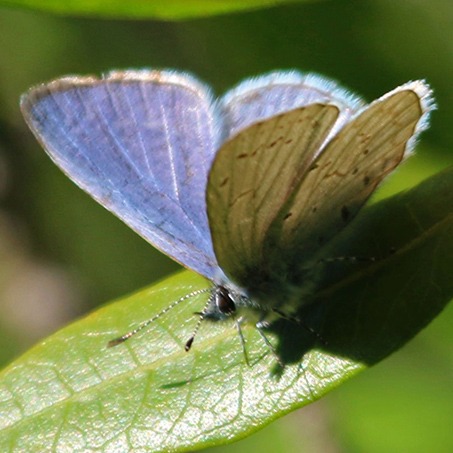
Spring Azure
The spring azure (Celastrina ladon) is a common butterfly that can be found throughout much of the eastern U.S. It is one of the earliest butterflies to appear each year in our region. In Kentucky, spring azures can start flying as early as mid-March. Further south, they may start flying slightly earlier. While further north,…
-
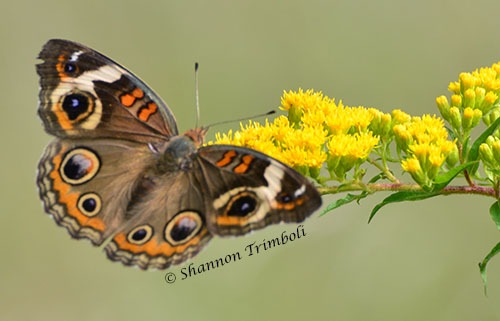
Common Buckeye
The common buckeye (Junonia coenia) is a familiar summer and fall butterfly throughout much of the U.S. They are easy to observe because they are found in open fields and gardens, and they tend to fly relatively low. Common buckeyes will also land on patches of bare dirt or mud. Buckeyes get their name from…
-
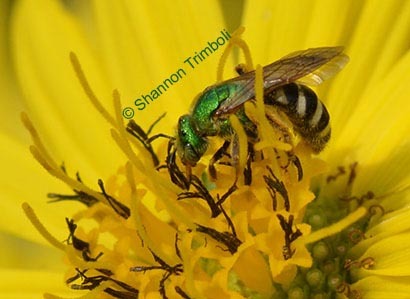
Bicolored Sweat Bee
The bicolored sweat bee (Agapostemon virescens) is a common native bee throughout much of the U.S. It is fairly easy to recognize because its head and thorax are metallic green and its abdomen is striped (usually). White and black stripes mean it’s a female, while yellow and black stripes mean it’s a male. However, some…
-
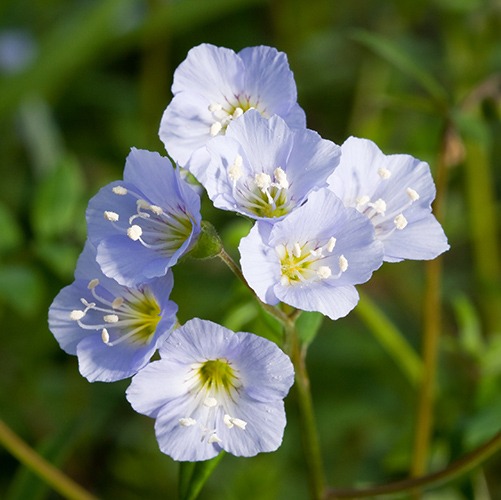
Jacob’s Ladder
Jacob’s ladder (Polemonium reptans) is one of our native, ephemeral wildflowers. It grows in rich, open woodlands throughout much of the eastern U.S. It is a relatively short plant, only growing to around a foot tall. The leaves are compound and are said to resemble a ladder, thus the common name. The blue, bell-shaped flowers…
-
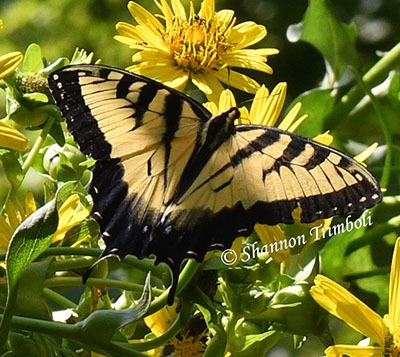
Eastern Tiger Swallowtail Butterflies
The eastern tiger swallowtail butterfly (Papilio glaucus) is a familiar visitor to backyards throughout the eastern U.S. Tiger swallowtails are one of our largest butterfly species with wingspans between 3 and 5.5 inches wide. Because they are so large and so brightly colored, they are easily spotted when visiting garden flowers. In Kentucky, we typically…
-
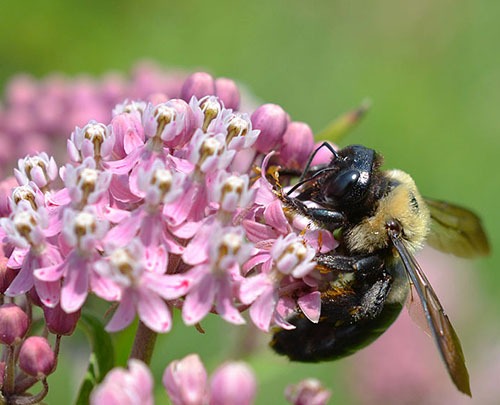
Pine for Carpenter Bees
in Take ActionOk, this tip isn’t so much about attracting pollinators and backyard wildlife as it is about avoiding or mitigating issues. Carpenter bees are valuable native pollinators that play an important role in our ecosystem. However, it can be hard to remember and appreciate that when they are drilling holes into your porch or the side…
-
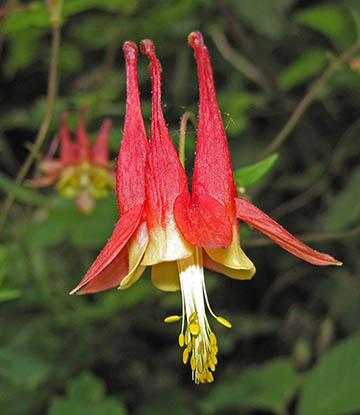
Eastern Columbine
The eastern columbine (Aquilegia canadensis) is a perennial wildflower native to much of the eastern U.S. It often grows in rocky or sandy soils and in open woods. Columbines are perennials, but will also readily self-seed if the conditions are favorable. Their self-seeding ability means that they will often form clumps or loose drifts of…
-
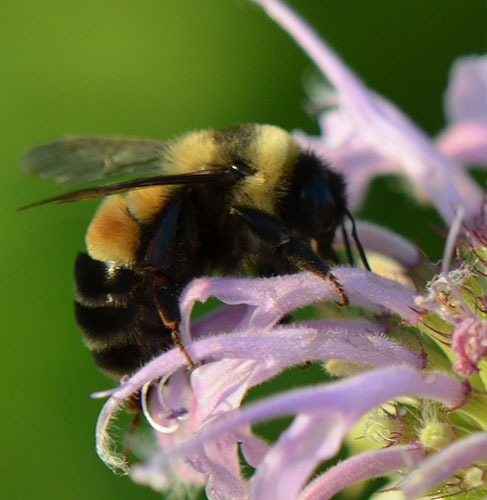
Bumble Bees
There are approximately 250 species of bumble bees worldwide with approximately 50 of those being native to North America. According to Bumble Bees of the Eastern United States, 21 species occur from the east coast to the western boundaries of Minnesota, Iowa, Missouri, Arkansas, and Louisiana. Based on their maps, approximately a dozen of those…
-
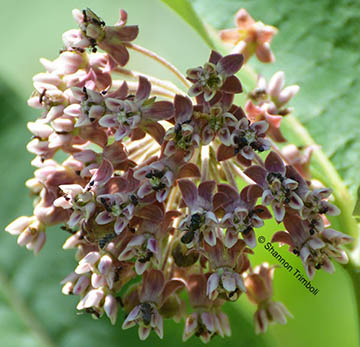
Not All Flower Visitors are Pollinators
We often think of all bees, butterflies, and other insect visitors to flowers as pollinators, especially if we see them actively gathering pollen or drinking nectar. However, that’s not actually true. Not everything that visits a flower is a pollinator for that species of flower. Pollinators are animals (usually insects in the eastern U.S.) that…
-
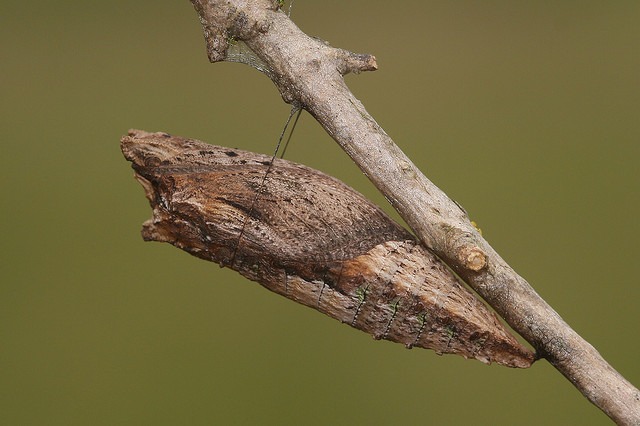
Provide Winter Habitat for Butterflies and Moths
If you are like me, winter is not typically when you think about providing habitat for butterflies and moths. In fact, until I started researching and learning about pollinators, I never even thought about how butterflies and moths survive the winter. I knew monarchs migrated, but didn’t have a clue about our other species. I…
-
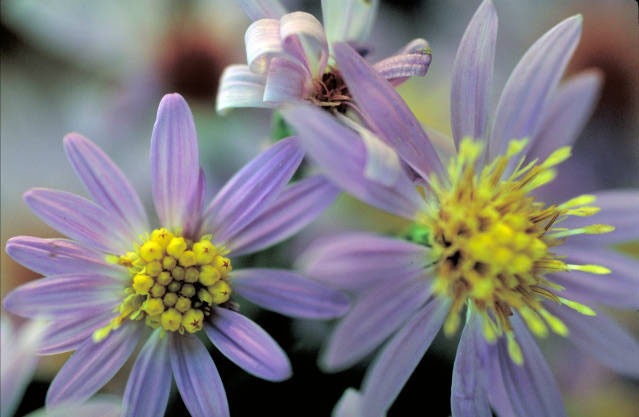
Short’s Aster
Short’s aster (Symphyotrichum shortii) is a native wildflower that can be found in Kentucky, Tennessee, and most of the surrounding states. It’ll grow to about 3 feet tall. The upper portion of the stem and upper leaves have tiny, stiff hairs that give the plant a slightly rough feeling. It often grows in relatively dry,…
-
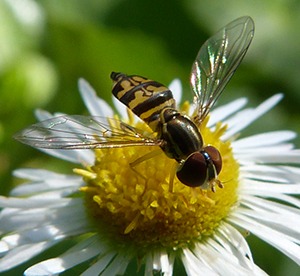
Hoverfly
When is a bee not a bee? When it is a hoverfly! Hoverflies are flies that look like bees or wasps. Their disguise is very good and casual observers often mistake them for small bees or wasps. Hoverflies, also known as Syrphid flies or flower flies, are found on every continent except Antarctica. They belong…
-
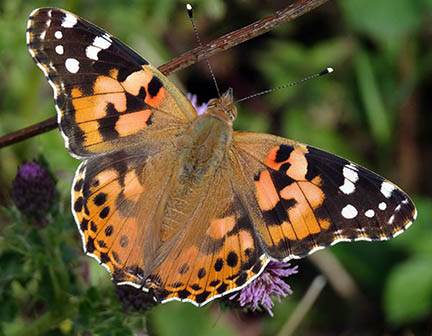
Painted Lady
Painted ladies (Vanessa cardui) are common Kentucky butterflies that can be found on every continent except Antarctica and Australia. It is often considered the most globally widespread butterfly in the world. Painted ladies are primarily orange and brown with some white highlights. Their wingspan is only 2-3 inches wide. While this little butterfly may not…
-
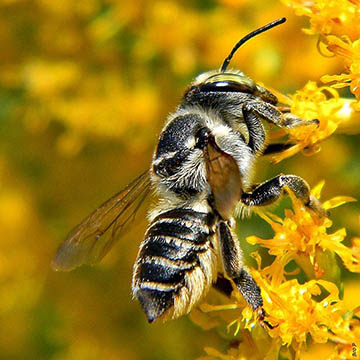
Leafcutter Bees
Leafcutter bees (Megachile spp.) are solitary native bees. There are many different species of leafcutter bees with over a thousand species worldwide. In North America, there are around 140 native species of leafcutter bees. Unfortunately, I can’t find a good resource for how many of those are found in Kentucky or the surrounding states. Most…
-

Appreciating the Wide Diversity of Bees
If asked to picture a bee, most people will think of a honey bee. A few people might think of a bumble bee, a carpenter bee, or maybe a sweat bee, but they will be in the minority and rarely will anyone think of any other type of bee. However, there are many other types…
-
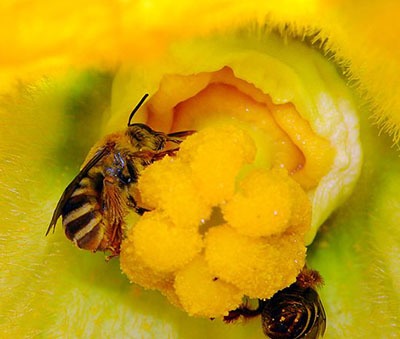
Squash bees
Every summer, squash and gourds of all sizes and shapes to begin their annual takeover of local gardens and farmer’s markets. While squash and gourds are well-known and much loved, the native bees that specialize in pollinating these plants are less well-known. All the different types of squash, pumpkins, and many commonly-grown gourds belong to…
-
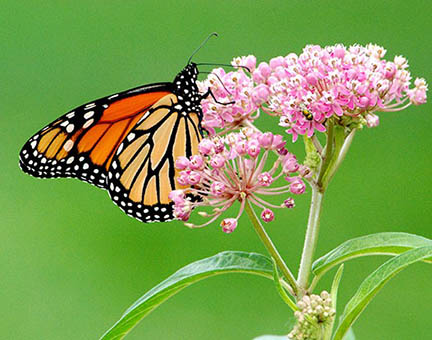
Swamp Milkweed or Rose Milkweed
Swamp milkweed, also called rose milkweed, (Asclepias incarnata) is one of 13 milkweed species native to Kentucky. It can be from 3-6 feet tall, but 3-4 feet is more common. Swamp milkweed has clusters of pink flowers that bloom from June through August, depending on the plant and whether it was mowed or grazed before…
-
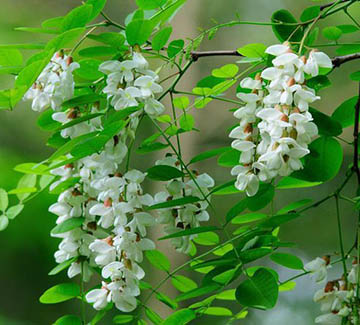
Black Locusts
Black locusts (Robinia pseudoacacia) are tall trees native to the Appalachian region and parts of the Ozarks, but they have been widely planted across the U.S. and in parts of Canada. They have even been imported to other parts of the world where they are often planted as ornamentals. Black locusts grow very quickly but…
-
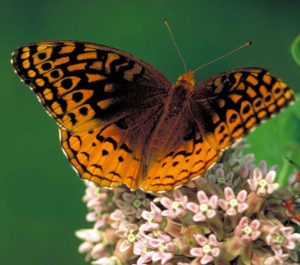
Great Spangled Fritillary
Great spangled fritillary butterflies (Speyeria cybele) are medium-sized butterflies commonly found in meadows, fields, and yards across Kentucky and many of the surrounding states. Its wingspan is approximately 2.5 to 3.5 inches wide. The name fritillary is derived from a Latin word that means checkered and refers to all the black spots on the fritillary’s…
-
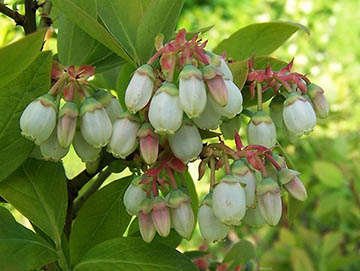
Highbush Blueberry
The highbush blueberry (Vaccinium corymbosum) is a native to many parts of the eastern U.S. including Kentucky. It is a tall shrub that can be found growing in sunny locations that typically have relatively moist, but well drained, acidic soil. The highbush blueberry is also planted extensively outside of its native range because the blueberry…
-
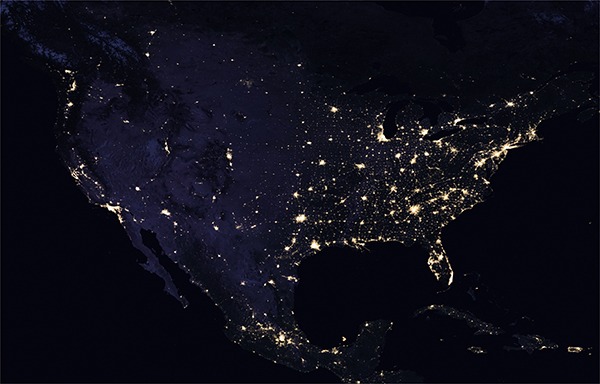
Turn Unneeded Lights Off at Night
Most of us probably don’t realize just how busy the nightlife can be from an animal’s perspective. Just because the sun goes down and people tend to migrate inside our well-lit homes, doesn’t mean that wildlife and pollinators do the same thing. Some species will curl up inside their homes to sleep, but many others…
-
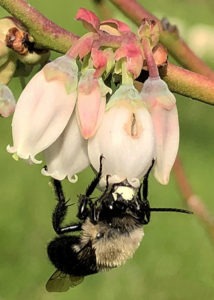
Southeastern Blueberry Bee
The southeastern blueberry bee (Habropoda laboriosa) is a native bee found in much of the eastern U.S. It is approximately a half inch long and looks kind of like a small bumble bee. Like its name suggests, the southeastern blueberry bee forages primarily on blueberry pollen and nectar, although it will also visit several other…
-
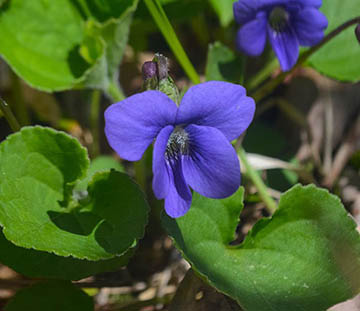
Common Blue Violet
There are over 20 different species of violets native to Kentucky and the surrounding states. Probably the most common of these species is the common blue violet (Viola sororia). The common blue violet grows in a wide range of habitats including meadows, parks, open woods, and yards. It has heart-shaped leaves and blue to purple…
-
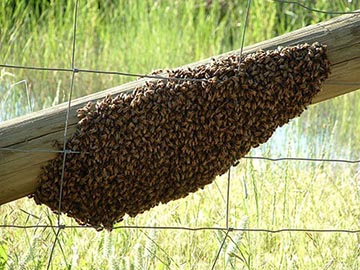
Swarms – What are they and what should you do if you find one?
Springtime is a busy time for honey bees and beekeepers alike. As more and more flowers and trees begin to bloom, the amount of nectar and pollen available for the bees increases. The worker bees will be busy bringing in all that nectar and pollen. The queen will also be busy laying eggs. She is…
-
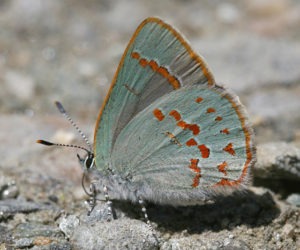
Early Hairstreak
The early hairstreak (Erora laeta) is a small butterfly native to Kentucky. It is only a little less than an inch from the tip of one outstretched wing to the tip of the other outstretched wing. In other words, its wings would barely cover from the tip of your thumb to your first knuckle. The…
-
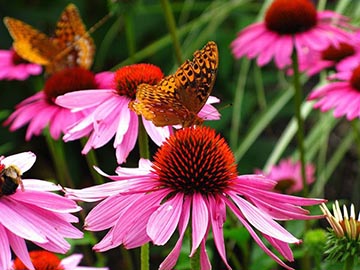
Plant Different Shapes, Sizes, and Colors of Flowers
Different species of pollinators are attracted to different shapes, sizes, and colors of flowers. For example, hummingbirds love red flowers with long narrow flower tubes. However, many bees don’t see the color red and don’t have long enough proboscises (tongues) to reach nectar at the bottom of a long narrow flower tube. Planning your landscape…
-
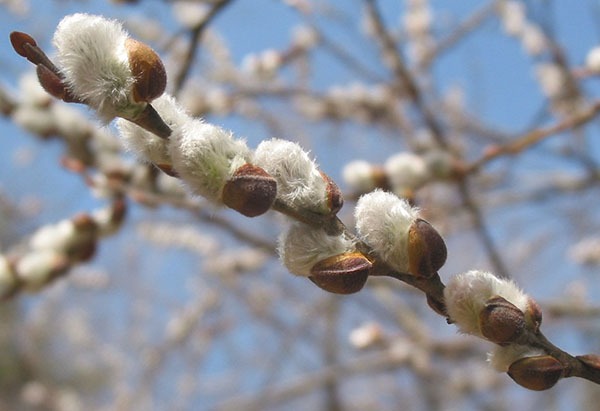
Pussy Willow
Different species of willow can be found throughout much of the Northern Hemisphere. There are several species native to Kentucky and several exotic species can be found growing as ornamentals. The pussy willow (Salix discolor) is perhaps our most familiar native willow, even though it is not Kentucky’s most common native willow. In addition to…
-
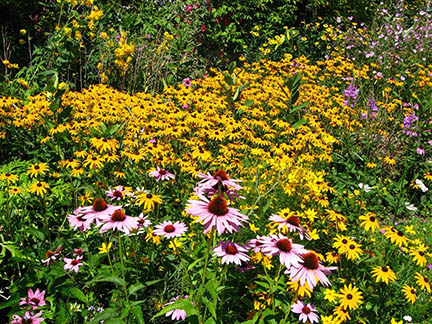
Plant in Mass to Attract Pollinators
Pollinators are more attracted to clumps of the same type of flower, than to individual flowers. One, it’s easier to see the clumps from a distance as the pollinator is flying around. Two, it is more efficient for the pollinator to work a clump of flowers than to have to fly any distance between each…
-
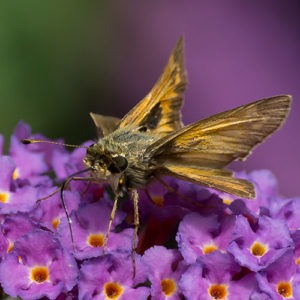
Skippers: Common, but often Overlooked Butterflies of Kentucky
Over the last week, I’ve noticed an increase in the number of brightly yellow tiger-swallowtail butterflies. Tiger-swallowtails are one of my favorite Kentucky butterflies and I love taking pictures of them on the milkweed and other wildflowers on our farm. However, there is another group of butterflies that I have also grown to appreciate over…
-
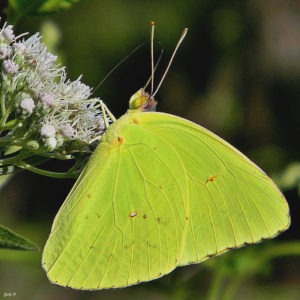
Sulphur Butterflies
Sulphur butterflies are the bright yellow butterflies with relatively few markings that we see in our gardens and other open areas during the summer and fall. Of the medium to small sized butterflies, sulphurs are some of my favorites. There are several species of sulphur butterflies that can be found in Kentucky and much of…
-

The Rusty Patched Bumble Bee – The First Bumble Bee Added to the U.S. Endangered Species List
Recently, the rusty patched bumble bee (Bombus affinis) made history when the U.S. Fish and Wildlife Service listed it as this country’s first endangered bumble bee. The rusty patched bumble bee is one of approximately 50 bumble bees native to the U.S. Relatively little research has been done on many of those species, including the…
-
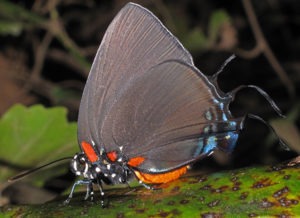
The Great Purple Hairstreak
Looking out my front window, I can see an old walnut tree with a couple of clumps of mistletoe in it. As I look at the mistletoe clumps in the walnut tree, I can’t help but wonder if the walnut tree is providing a winter home to any Great Purple Hairstreak chrysalises. The Great Purple…
-
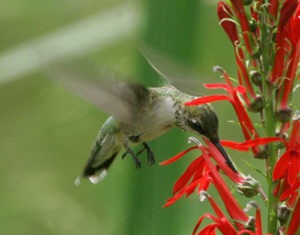
Ruby-throated Hummingbirds: A favorite summer visitor and important pollinator
Ruby-throated hummingbirds are the only hummingbirds that nest in the eastern United States. They arrive in Kentucky between mid-March and early April. The males arrive first and set up territories. When the females arrive, the males display to attract the females. The male’s mating display is a series of long swoops that look like he is…
